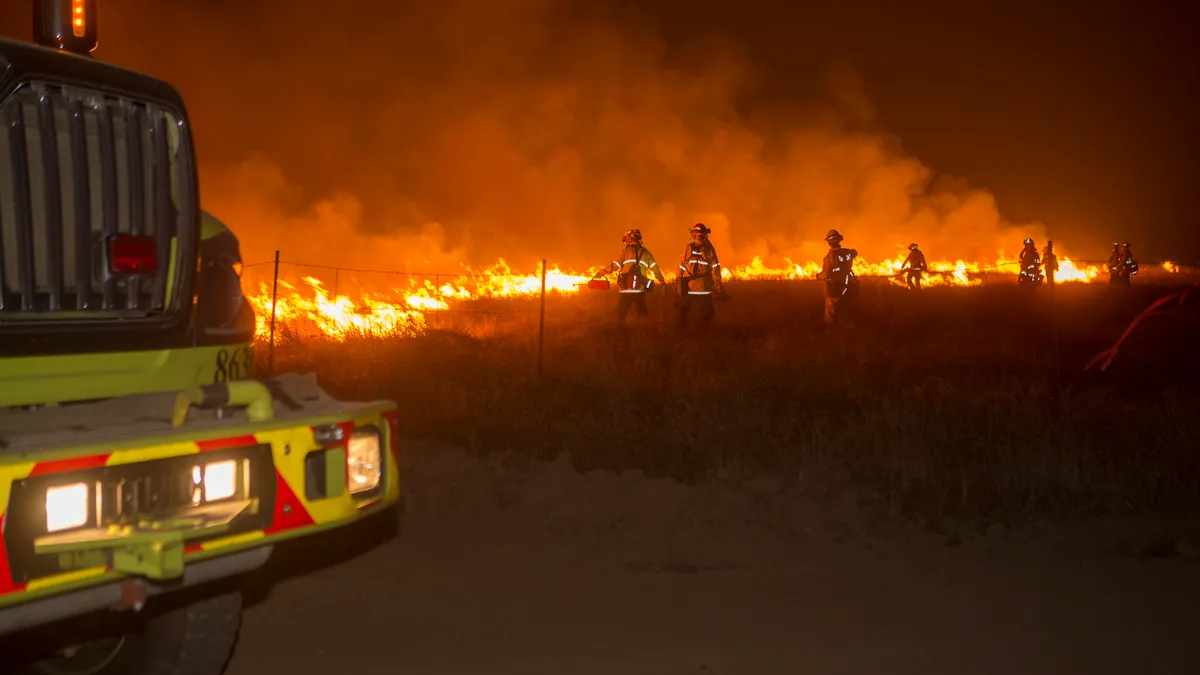Dive Brief:
- The California Public Utilities Commission on Friday launched the second phase of its wildfire mitigation plan proceeding, with the aim to design a set of metrics to determine whether utilities' plans have been effective.
- The second phase will also focus on developing a process for next year’s mitigation plans "that allows more time for review." The first round of utility mitigation plans were approved in May, with regulators moving quickly to finalize the strategies ahead of the high-risk summer season.
- California's fire season began this month with Pacific Gas & Electric (PG&E) proactively cutting power to more than 20,000 customers across five counties during a period of high winds. The utility says regulators should consider a new "resiliency adder" to incentivize more distributed generation and energy storage in high-risk areas.
Dive Insight:
California's wildfire season is only weeks old, but already PG&E has utilized the new Public Safety Power Shutoff capabilities included in mitigation plans. Looking ahead, regulators say they need to develop tools that can help determine whether or not the plans have actually reduced the risk of catastrophic fires.
Phase 2 of regulatory proceedings will focus on developing a process to evaluate whether wildfire mitigation plans were successful, and templates for reporting data consistently. Utilities must propose metrics to assess whether the plans have reduced or will reduce the risk of wildfires, and suggest new areas of data collection that could assist assessments.
In determining how to make future plan reviews more efficient, the CPUC says it will consider "whether to stagger large IOU filings and those of the small and multijurisdictional utilities."
A prehearing conference to discuss the scope and schedule of Phase 2 has been planned for Aug. 28. Utilities have until July 30 to file reports with the commission describing their datasets and map products that could be useful in assessing whether their plans are reducing risk.
A key part of the mitigation plans approved this spring is the Public Safety Power Shutoff program, which is intended as a last-resort option. To reduce the impacts of those shutoffs, PG&E in May said it recommended a "resiliency adder" to incentivize the development of distributed generation and storage. The filing was part of the opening comments in the commission's proceeding considering modifications to its Self-Generation Incentive Program.
The utility said it recommends regulators "create a simple financial incentive to incent project development by the most impacted customers." PG&E said it prefers the concept of an "adder" to incentives in order to "encourage resiliency-promoting projects."
PG&E said that could be done by adding $0.15/Wh to the future approved base incentive rate, which aims to make generation and storage projects more affordable.
"If the new incentive rate for a residential customer is $0.20/Wh, with the resiliency adder, the full incentive would be $0.35/Wh for customers with the most critical need," PG&E told regulators.
Southern California Edison similarly recommended the CPUC consider a resilency adder, proposing a range of levels from $0.10/Wh to $0.25/Wh, depending on the customer and location.
"The structure and eligibility criteria would encourage those in high risk fire areas to participate and use the program to add resiliency to their system," Edison told regulators. "This is available to all customers; however, the incentive structure will offer a greater reward to community-based buildings that directly support communities."















